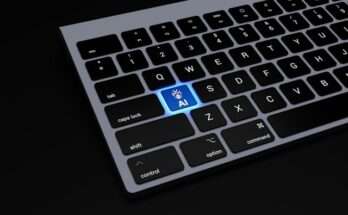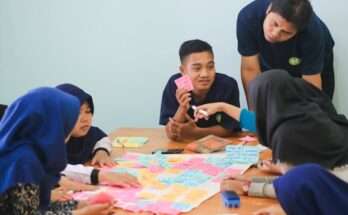What’s the difference between interaction design and product design? In some organizations, these two roles are performed by the same person. Others have them as separate roles, with different people handling each job. What are the responsibilities of each role, and what are the skills that make an ideal candidate? Let’s take a look at some examples to understand more about the differences between these two positions in the product development process.
Interaction Design vs Product Design

What is interaction design?
Interaction design (or IDX) is all about building interfaces that facilitate seamless communication between users and machines. Interfaces are not just screens; physical products or environments can be described as interfaces, too. A device’s function is defined by its user interface. An appliance with buttons clearly marked and a simple display, for example, has a better user interface than one without these features.
Before a machine goes into production, an interaction designer will identify opportunities to improve how people interact with it through research and prototyping. Interaction designers focus on the human experience over business goals and often strive to create interfaces that allow people to complete tasks in ways that feel intuitive rather than laborious.
Interaction design is closely related to industrial design, which focuses on how things look, but interaction designers are also concerned with how things work. When you interact with an interface designed by an interaction designer, it should be easy to predict its response. For example, if your microwave beeps at you when a cycle is complete, that makes sense. If it doesn’t and just displays a message like Error 32 instead, that’s confusing and not very user-friendly. In product design terms, anything we use or experience comes down to these interactions.
What is product design?
Product design is the process of designing a product and iterating to give a better solution. The focus of product design is on what you will be creating for your customer. It’s not about how you’re going to build it or who you are building it for. It’s an in-depth study of your market and customers, answering questions like:
Who is your target market? What problems do they have that my product can solve? How will I distribute my product? Once you answer these questions and more, it becomes much easier to move forward with building your app. Since there are so many different elements to consider when designing an app, having a well-defined target audience can greatly affect how useful your app will ultimately be.
Interaction design focuses on how an app will interact with its users. One of the most important principles that should be considered when designing for an app is touch target size. Touch targets are interactive elements on a user interface and can include buttons, menus, links, and text boxes. The biggest benefit of using large touch targets is that they provide a larger area for users to tap or click on.
This makes it easier for people who have large fingers or poor vision to be able to interact with your app. Creating effective touch targets requires both information architecture and visual design skills, but also requires some usability testing in order to see what works well and what doesn’t work as well as you think it would in real-life testing conditions.
Similarities between two fields Interaction Design vs Product Design
If you are coming from a design background and making your first steps into a project management role, then you may be surprised to find out how much these two fields have in common. Interaction designers and product designers both work with prototypes to test their ideas before they’re released, conduct usability tests, research user behavior, investigate competitive products and use analytics tools to measure their success.
The main difference between them is that interaction designers plan for actual user behavior while product designers have to account for future changes. In other words, it’s easier for an interaction designer to predict what users will do if they can just think about it. They have more freedom in deciding what will actually happen on screen because there are no technical limitations on interfaces like frame rates or computer memory size.
The bigger concern for an interaction designer is how to make a smooth transition from one step to another. They need to consider multiple states, or what’s happening on-screen at any given time and determine where users should go next. In contrast, product designers have a lot more freedom in how their product will look in different phases because they know that things are subject to change.
The tradeoff is that they also have less room for error—they can’t think about everything that could happen on screen and needs to account for possible technical limitations. As a result, product designers don’t always sketch out everything they want; they focus on key interactions that are essential at each stage of their design process.
Difference between two fields Interaction Design vs Product Design
Interaction design is a process of conceptualizing, documenting, evaluating, and prototyping experiences that take place between humans and products (usually digital). The role of interaction designers is to make technology usable and understandable by building clarity into it. If you’re more interested in how a product works than why it exists or who will use it then product design may be more suitable for you.
Product designers build products that solve problems, are often digital, and focus on how they’ll be used, what they look like, what feels right, etc. If you’re still trying to decide between interaction design and product design, read on for more information about what each involves. Keep in mind that as technology advances and our world becomes increasingly digital, both of these professions will become increasingly connected.
While they differ in their main objectives now, they are going to be blended into one single job in the coming years.
The goal of a product designer is to solve problems by creating products that people want and need based on market trends and surveys. They may work independently or with a team of other designers, usability experts, and developers depending on how big a project is.
Are you interested in both Interaction Design vs Product Design fields?
Do you want to create apps? Have you wondered about which field is better suited for your talents? If so, you’re in luck. Today, I’m going to dive into two job titles that often go hand-in-hand: interaction design and product design. While these jobs can seem synonymous at first glance, there are some subtle differences between them that make each one unique from another. It’s important to understand these differences before deciding on a career path as they could potentially impact both your salary and work environment.
Interaction design is a term used to describe how digital products are meant to be used. Interaction designers are tasked with bringing digital designs, including mobile apps and websites, to life by creating a smooth user experience (UX). They typically work as part of a team, along with product designers and developers. Their role primarily focuses on honing and refining digital interactions, ensuring that users are able to use products efficiently. Therefore, interaction designers must have an eye for detail so they can ensure an optimal user experience for their projects in order to create something truly special.



